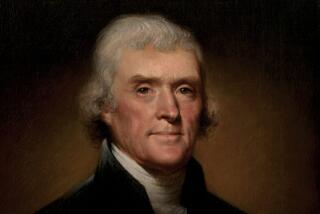New Tax-Free Accounts Proposed to Encourage Savings
- Share via
WASHINGTON — Americans would be allowed to sock more money away into a new breed of tax-free accounts that could be used to save for retirement, college expenses or other purposes under a proposal put forward by the Bush administration Friday.
The proposal contained in President Bush’s 2004 budget is aimed at encouraging Americans to save more, the Treasury Department said.
But critics contend that poor and middle-income people struggling to pay bills and make ends meet probably would not be in a position to put more money into such savings accounts, even though the contribution limits would be higher.
The changes envisioned in the Bush plan would have to be approved by Congress, Treasury officials said.
Under the plan, two new types of accounts would be created: lifetime savings accounts that could be used for any purpose, such as education, health care or buying a home, and retirement savings accounts.
A person would be permitted to contribute up to $7,500 a year to each account, for a maximum of $15,000 a year. Traditional Individual Retirement Accounts and Roth IRAs currently allow people to contribute up to $3,000 a year.
Contributions to the new accounts wouldn’t be tax-deductible, but money in the accounts could grow tax-free and be withdrawn tax-free. That’s similar to Roth IRAs; with traditional IRAs, the contributions are generally tax-deductible but money is taxed at withdrawal.
People would be able to withdraw money tax-free any time from the lifetime savings accounts, but would have to wait until after age 58 to pull out money tax-free from the retirement savings accounts, Treasury officials said.
The new accounts would allow anyone to participate regardless of income level, as opposed to Roth IRAs, which restrict participation based on income. Under the Bush plan, people would be able to keep their existing IRAs, but would no longer be allowed to make contributions to them.
That provides an incentive for people to convert their existing IRAs into the new accounts, officials said.
“No longer will individuals have to worry about the confusing alphabet soup of six different savings accounts,” said Pam Olson, Treasury’s assistant secretary for tax policy. “No longer will people have to worry about the endless maze of confusing rules. The two simple accounts will have one powerful goal -- making saving for everyday life and retirement security easier and more attractive.”
But Dean Baker, an economist and co-director of the Center for Economic and Policy Research, a liberal think tank, said the plan would provide the biggest savings incentive to the wealthy because, in general, low- and middle-income Americans’ contributions are well under the existing contribution limits for IRAs.
“This is oriented to high-income people,” Baker said. “This allows people to put more money into tax-sheltered accounts, but the vast majority of the population doesn’t have enough money to contribute to these accounts under the old limits.”
The Bush plan would also seek to simplify retirement savings plans that companies set up for their employees. The plan would seek to consolidate pension plans such as 401(k) plans into new employer retirement savings accounts.
Treasury said these new accounts would follow existing rules for 401(k) plans, but the rules would be simplified and streamlined.
More to Read
Inside the business of entertainment
The Wide Shot brings you news, analysis and insights on everything from streaming wars to production — and what it all means for the future.
You may occasionally receive promotional content from the Los Angeles Times.










